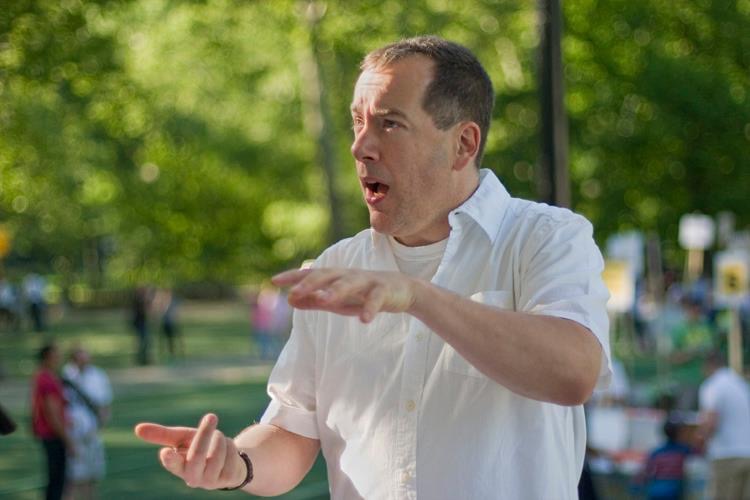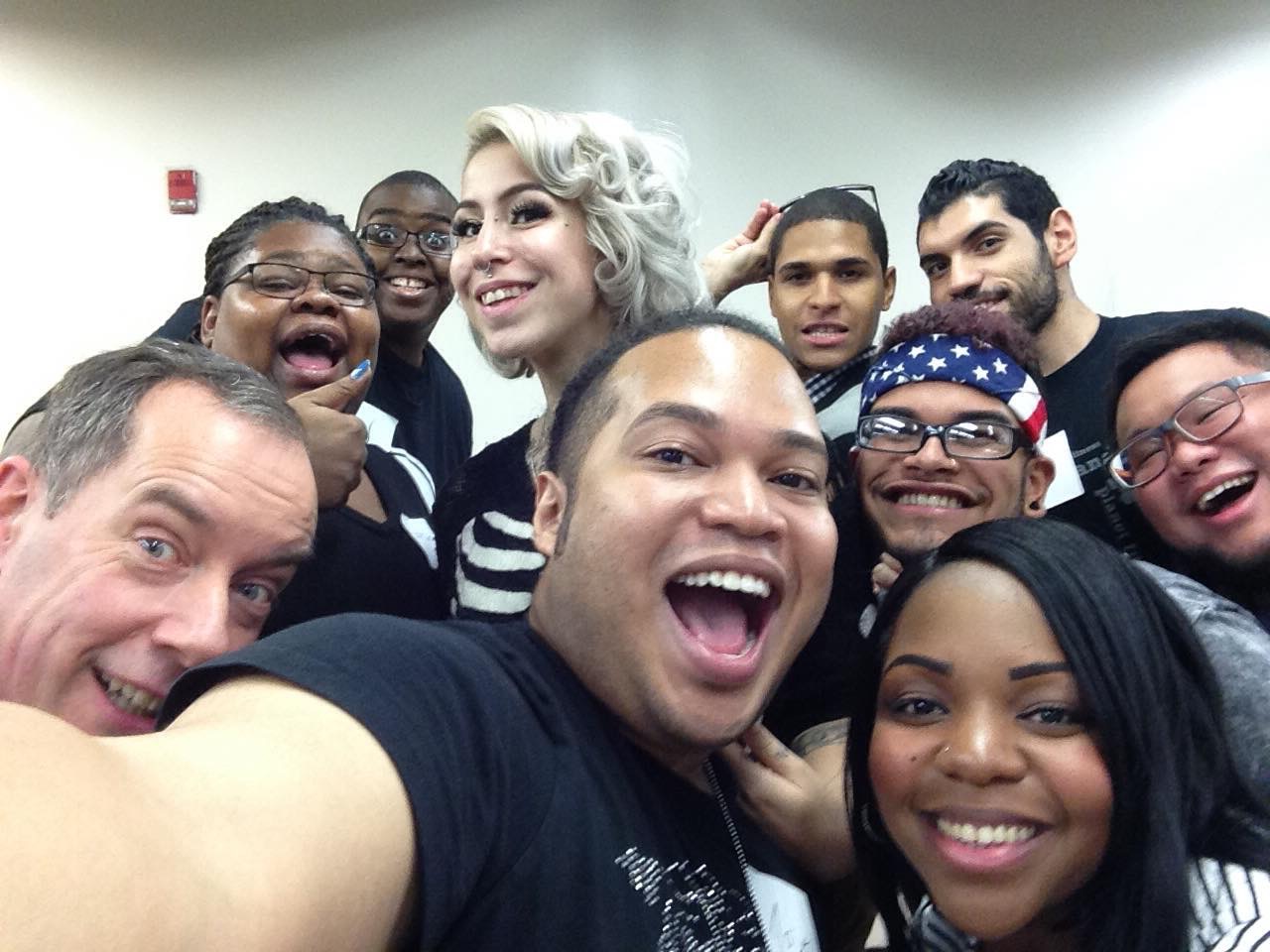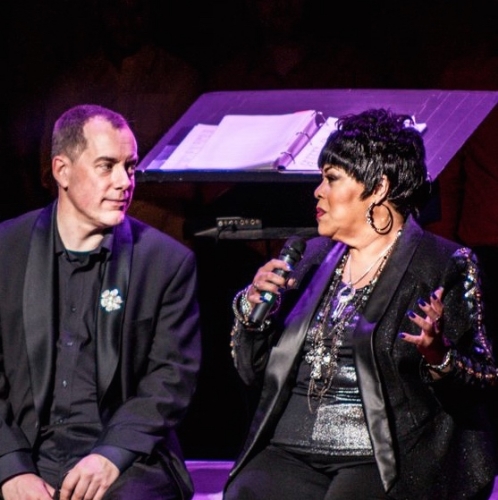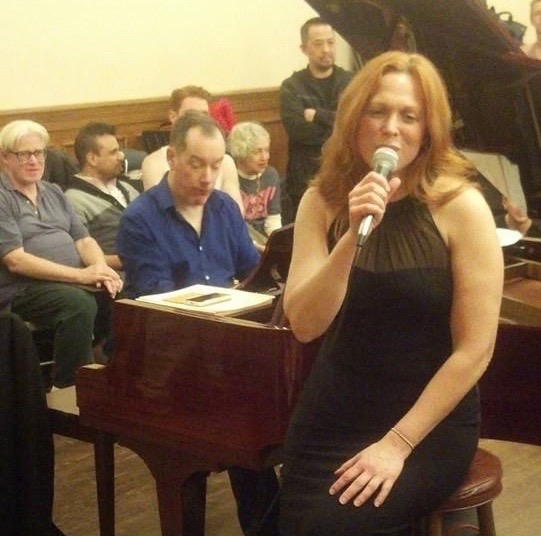NEW YORK CITY GAY MEN’S CHORUS
New York CIty Gay Men's Chorus, GALA Festival Opening Ceremony, July 2016 - we always sang with energy!
From 2007 to 2019, I was lucky enough to be the full-time conductor of New York City Gay Men’s Chorus. I was also Artistic Director of Big Apple Performing Arts, the umbrella organization that oversees our sister ensemble, Youth Pride Chorus. Scroll down for videos, pictures and highlights.
Transformation and Impact
In my 12 years, I am proud to have reimagined and rebuilt NYCGMC into the world-class, world-renowned New York institution it should be. Together, we rebuilt the sound, prioritizing stylistic versatility, and the ability to do musical theater and pop styles with confidence and authenticity.
We returned to artistic success, rebuilt a reputation for being fun and easy to work with, and built new audiences, once again becoming a pioneering voice for the LGBTQ community. There was also a financial transformation. When I arrived in 2007, we had a 6 figure debt, and by the time I left, we had surpassed a budget of US$1.1M, an endowment and considerable savings.
By June 2019, NYCGMC had over 300 talented singers of various ages, backgrounds, and experiences, and several innovative small ensembles and outreach groups, including our queer a cappella group ‘Tonewall’, a ‘SAGE Singalongs’ group that did regular singalongs for LGBTIQ+ elders, and a group that worked with African Caribbean French-speaking women from Brooklyn who were HIV positive. We also ran a yearly Singathon on the street, which enabled us to connect with thousands of regular New Yorkers. In line with our mission, we had a palpable energy and soul in our performances that audiences felt and connected with.
Diversity, Equity and Inclusion
I was especially proud of the great strides we took towards Equity and Inclusion. Under my leadership, we increased the number of people of color in the group from a paltry 10 when I arrived to roughly 55 by the time I left, including 25 singers from all over South East Asia and 15 African Americans. We also increased the number of singers whose mother tongue was a form of Spanish. Not good enough, and the work was slow and gradual, but the results were real.
I also set up our Inclusion and Equity initiative, a monthly forum where BIPOC people and others could meet, share and make proposals to other parts of the organization. We also reduced the average age of the group from around 52 to under 40, increased our gender diversity and put people of color in a number of leadership roles, including Board members, Section Representatives, Outreach Co-ordinators and choreographers.
Art is a key way to increase mutual understanding between cultures and styles of singing. We also were prepared to take risks where it seemed gay enough(!). With support from outside leadership like MIchael McElroy and our sister choir Lavender Light, we presented our 2010 ‘Holiday House of Love’ gospel show, which at the time was a milestone, though now it seems old-fashioned.
As our membership became more diverse, it became important to sing their music and represent their voices in the art. We sang K-pop (Mamamoo’s New York is SO gay), Bollywood (Jai-Ho! from Slumdog Millionaire) and many pieces in languages including Latin, Hebrew, Japanese and many in Spanish. All made some singers uncomfortable, and all facilitated good change in both singers and audiences. All put us at risk of accusations of cultural appropriation, and all demanded that we put in the hard work necessary to sing with true respect. The growing numbers of BIPOC and younger singers under my leadership, and our expanding audiences were testament to our progress in this area.
As recent events have shown, there was much more to do in this mainly white, middle class group, to make it comfortable for all singers, to make it truly representative of New York, and to give every singer an equal seat at the chorus table.
Singathon on the street
Choral Sound
I have a particular approach to choral sound. Originally classically trained and an organist lover of church music, I still strongly believe in stylistic openness, that the best choirs should sing well in all styles, and be able to adapt their sound, rhythmic approach and diction to suit their repertoire. Larynxes can be high or low, and all singers should be able to belt like Patty Lupone, resonate like Bryn Terfel and twang like Tammy Wynette.
This is derived in part from my own wide pro experience in classical music, musical theater, jazz and popular music. It also comes from my Estill training, and a belief that the best choral singing has authenticity, and this enables it to have purpose, by connecting with a wider range of listeners.
Rhythmic Approach
Rhythmic approach and groove was also key. Regardless of our social and political goals, you can see from the pictures and video below that my singers also enjoyed themselves, sang with great diction, and put music of all styles in their bodies. We sang in a very wide variety of settings in many groove-based styles, and we always seemed to succeed in moving people, and raising the roof!
Guest Stars
Since 2007, NYCGMC worked under my direction with artists of many styles. Our pop music work allowed us to reach the widest audience. This included a 2018 appearance in Alan Cumming’s comeback show at Carnegie Hall, 2017 stadium gig appearance with Demi Lovato, a 2014 Pride appearance singing 'Chandelier' with Sia and a 2013 dance music show featuring soul diva Martha Wash. We also had an on-going relationship with transgender singer-songwriter Our Lady J. and American Idol runner-up Frenchie Davis.
In New York, musical theater is an important way to connect with local audiences and other gay men. NYCGMC regularly works with many of Broadway's top vocal talents, and I had the privilege of performing with Kelli O’Hara (South Pacific), Victoria Clark (A Light in the Piazza), Carolee Carmello (Scandalous, Parade), Chris Sieber (La Cage aux Folles, Spamalot), Fredi Walker-Browne (Rent) and Ann Harada (Avenue Q). I am always keen to promote choral singing in many different styles, and NYCGMC also worked with gospel and soul singers Lillias White and Michael McElroy (Broadway Inspirational Voices).
NYCGMC’s Connect Program
I am also proud of our Connect program work, a series of smaller projects which aimed to engage with all corners of New York City. Two of NYCGMC's most exciting Connect program activities were our 'SAGE Singalongs', singalongs at centers for older LGBTQ citizens, and our pioneering work with Diaspora Community Services.
Here, we did what I call 'singing interventions' with women of color in Church Avenue, Brooklyn, where we combined singing songs they knew with small group discussion of feelings and issues around living with HIV. We sang with them, they sang with us, and we all learnt about HIV together.
NYCGMC small groups also regularly sang at 40-50 social and political events a year, from the 2012 Annual State of the Borough Address by Scott Stringer, Borough President of Manhattan to weddings, funerals, births and social events.
These NYCGMC performance highlights still make me proud:
‘Quiet No More’ - Excerpts from the June 2019 Carnegie Hall show, featuring a massed choir from 25 LGBTIQ+ choruses across the US, singing this brand new commission
Celebrating the 50th Anniversary of the Stonewall Riots in Times Square, June 1019
Live in Times Square on Good Morning America, offering ‘Light’ in the wake of the Orlando massacre, June 13th 2016.
NYCGMC sings in sweet classical style, at the June 24th 2009 Service of Thanksgiving & Celebration for Pride at the Cathedral of St John the Divine. This is ‘Tree of Peace’ by Gwyneth Walker.
Explaining ‘what we do’ at NYCGMC in 2008 - I was definitely younger then(!).
NYCGMC at the New York Philharmonic Orchestra holiday Show, Avery Fisher Hall, December 2015
In March 2017, 2 months after the US presidential election, we welcomed Coro Gai CIudad de México to join us in New York. My goal in this show was to create an international choral alliance of LGBTQ singers, celebrating our commonality as human beings. Lasting friendships were made across nations, genders and sexualities. We came together through singing, to make a proud global statement of hope through community. A year later we joined them in Mexico City, to a sell-out crowd of 3000. #nowalls #thepowerofsong
NYCGMC Big Gay Sing 7 March 2014. It's hard to hate someone you just sang a song with!
Every year, we sang and danced in the New York City Pride March. In 2017, I was on TV advocating for LGBTQ equality, in a flowery shirt.
And here is my Connect program slide show:






“The energy, the vitality of your singers makes me feel LOVE as an entity existing in your show”






